Growing Blue Sky Homestead
Live and Learn with us
March 31, 2025
Setting up the new milking stanchion for Hazel
While we are waiting for the supplies to arrive to build the drum carder with which we will continue to process the sheep wool, Christina utilized the time to build a milking stanchion for Hazel and started training her to it. Today, she brought the milking stanchion to the cow pen and set up a milking area that can be separated from the general cow pen when it's not time to milk, so that it won't be climbed on, used as a scratching post, or pose a risk for injury when being played on.
Hazel loves her treats and, after the initial hesitation, was easily encouraged to step up onto the milking stanchion. It was important to make it a positive experience (for everyone involved) and we'll continue to take daily, small steps towards Hazel eventually calmly standing in the stanchion to be milked.
Update: As of May 20th, Hazel is reliably stepping up onto the milking stanchion and is comfortable with the head gate. I think we are ready...
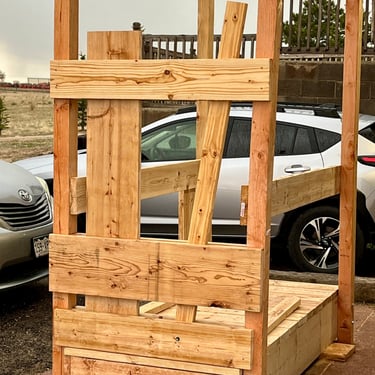
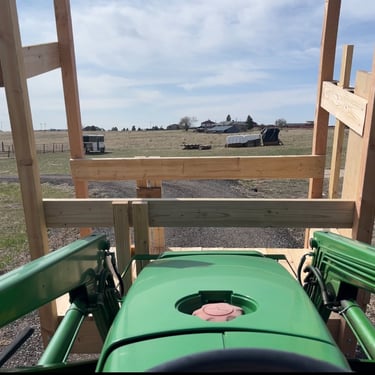
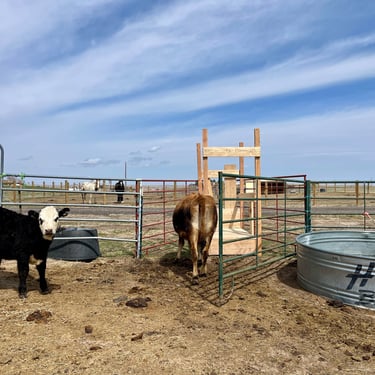
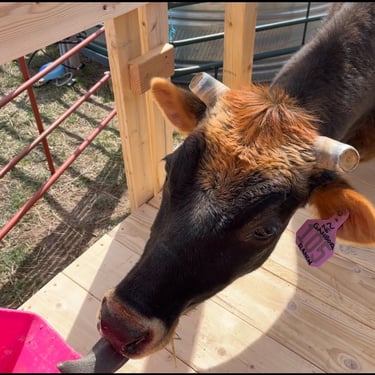
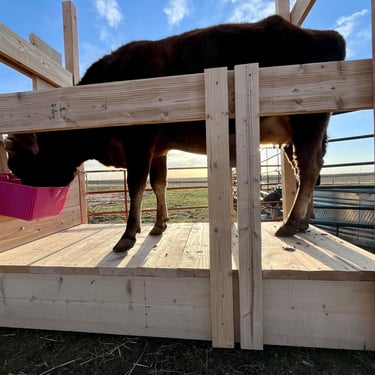
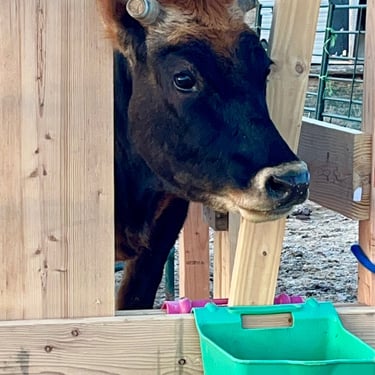
July 24, 2025
The Milking and Dairy Processing Adventures are finally here!
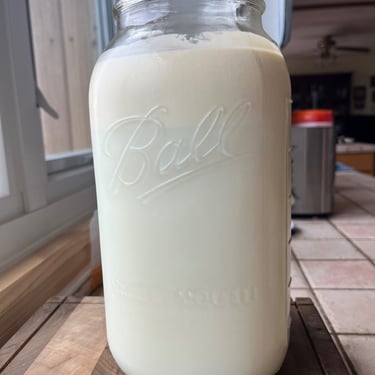
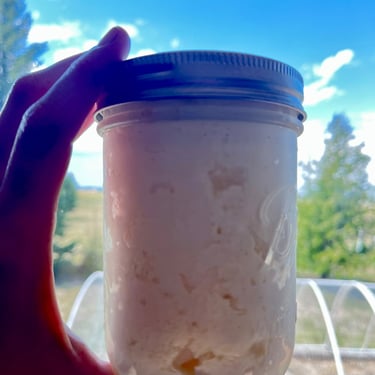
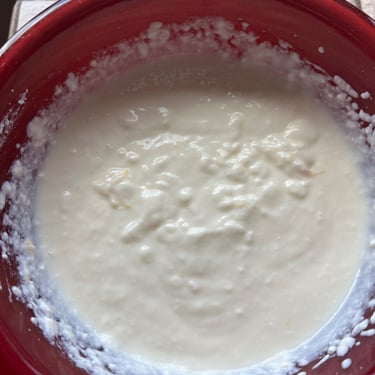
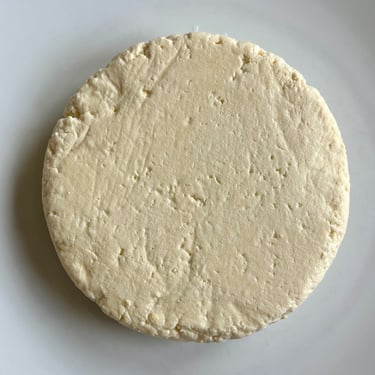
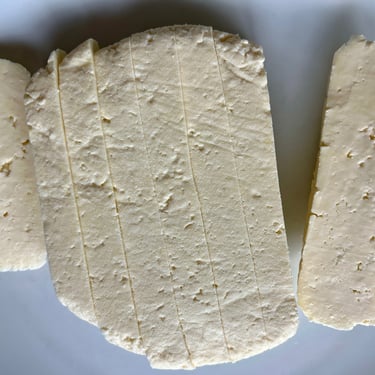
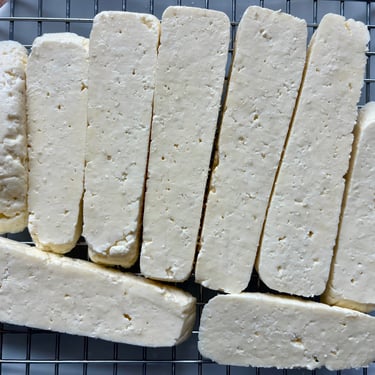
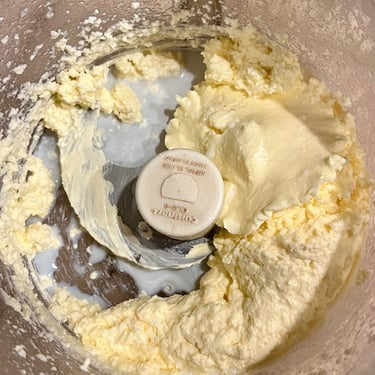
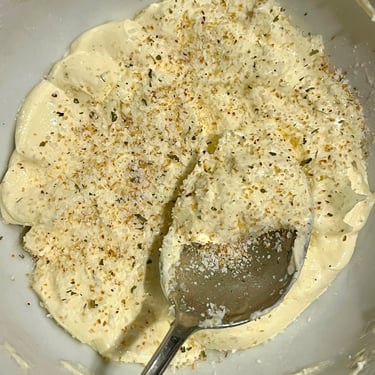
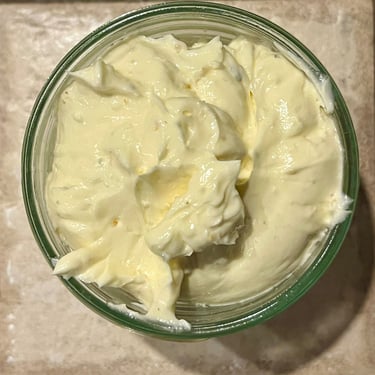
Now that we get about half a gallon of sheep milk as well as half a gallon of cow's milk each day, I took a deep dive into all of the different ways milk can be utilized. There is so much to learn and there is no better feeling than when everything finally comes together and makes sense. I started out making yogurt out of the sheep milk, using a yogurt starter. It turned out wonderfully rich and creamy and quickly turned into my go-to lunch - with a fresh orange added. YUM! My second goal was to figure out how to make "Quark", a German staple that is really hard to find (and expensive) here. It's kind of like yogurt but not really and my grandma always prepared it by adding vanilla sugar, sugar, milk, and a raw egg and whisking it until it was smooth. Then she'd serve it with fruit - Oranges, bananas, or in-season strawberries ... it was divine!
Next I tried my first cheese: Feta cheese out of both sheep and cow milk. I figured that was a reasonable starter cheese as it only needs to age 1-3 weeks. I used a starter and it was much less intimidating than I had initially thought. Maybe I'm brave enough now to try a Gouda...
I'm still working on my butter making skills. The first batch I made, I did not 'culture' the cream first (let it sit out overnight to slightly sour) but the butter came out nice anyways. It's just sweeter than if it was cultured but that also does not matter (to me) since I made a small batch into salted butter and another small jar of garlic butter.
I just learned that, if I can make a 'clabber culture' by letting some raw milk ferment and continue to feed it (kind of like a sourdough starter), I can use that as a starter for EVERYTHING. Even cheeses. I'm finding out that, at least in my house in Colorado, the milk likes it to be about 90F to 'clabber' and just letting her sit out at room temperature does not do anything for her. She likes it warm. So this is my current project. Hard cheese is next. So fun!
August 6, 2025
Better to know than to hope - Milk Testing on the Farm
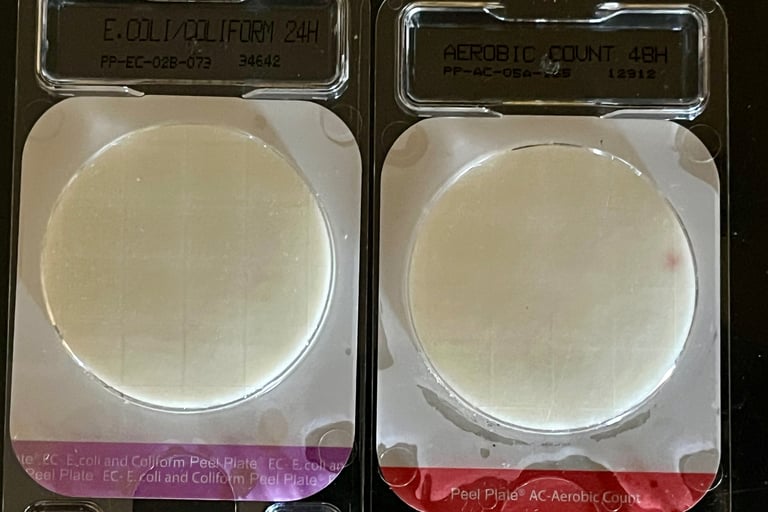

When diving into the world of raw milk, I quickly learned that finding a straight-forward answer of "Yes, raw milk is good for you" or "No, pasteurizing your raw milk is the way to go" is not an easy task. The internet provides a plethora of information which, more often than not, appears to be heavily influenced by different backgrounds and agendas and my search results varied from 'raw milk is a superfood' to 'raw milk will kill you'. I am neither a biologist nor a chemist but I can appreciate the fact that there are lots of organisms in our environment - and in us. Some do amazing things for our bodies, others can cause a lot of harm. Instead of trying to kill them all out of fear that I might ingest the harmful ones and suffer the consequences, I decided that knowing is better than hoping and invested in a home-laboratory (and the necessary tools and tests) to test our milk myself.
Since it is illegal to sell raw milk for human consumption in the state of Colorado, I was unable to find state-testing facilities to test our milk but there are private laboratories that offer milk-testing services. It costs about $50 per milk sample for shipping and basic testing (Standard Plate count, Coliform Enumeration, E.Coli, Salmonella), so if we wanted to get our sheep- and cow milk tested on a weekly basis, that would be a large expense.
Above, you can see our sheep milk samples. The E.Coli and Coliform test is on the left, and the Standard Plate count is on the right. Up to 10 'dots' per plate are considered to be 'within the standard protocol' and safe for raw milk consumption according to www.rawmilkinstitute.org. With test result like these, I am excited to enjoy our milk and to continue to find out what delicious products we can make out of it!
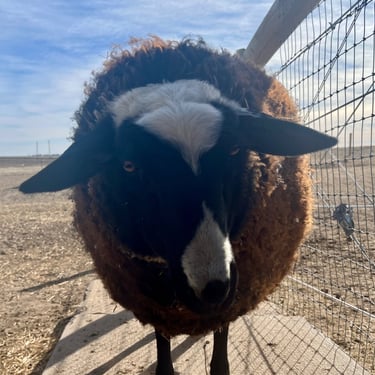
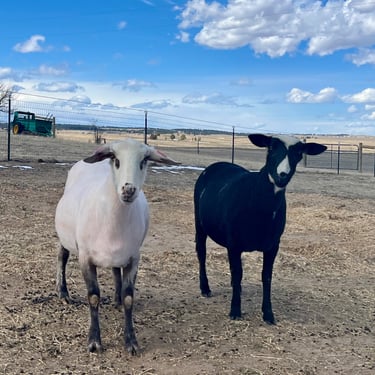
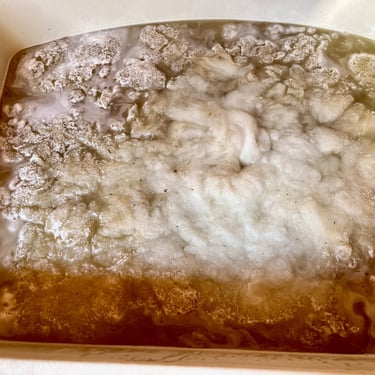
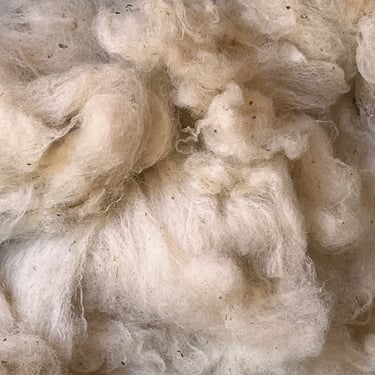
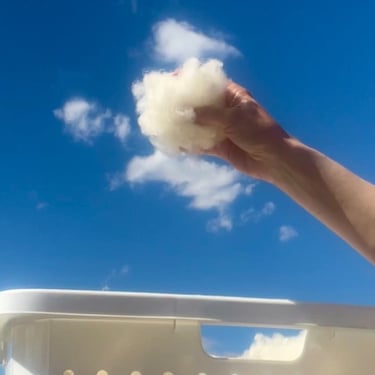
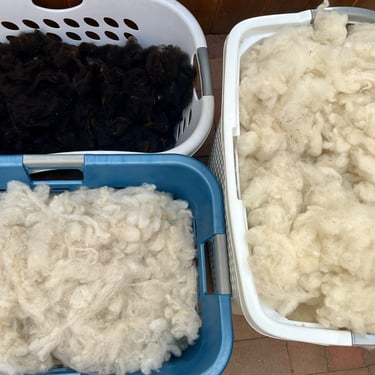
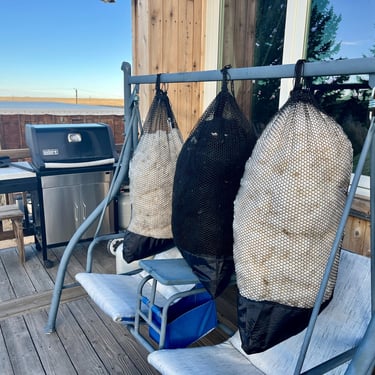
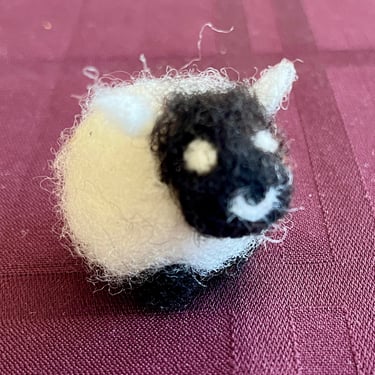
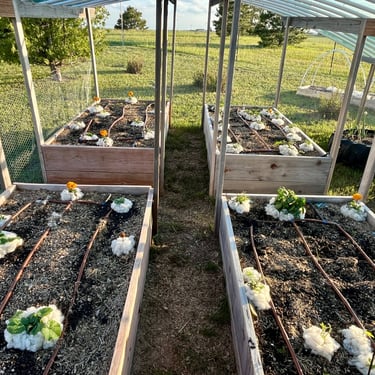
March 23, 2025
Our first sheep shearing
As we approached six weeks before Blossom's due date, it was essential to shear the ladies to ensure their well-being assess their body conditions. Blossom, in particular, needed to be sheared ahead of giving birth to prevent her from lying in the snow during or after lambing, which could put her lambs at risk for hypothermia. Poppy was in dire need of a haircut, as the fleece obscured her true body condition by making her look 3 feet wide, and sweet Rosie was sheared simply because the season called for it. With the shearing complete, we could rest easier, knowing the ewes all in excellent health and Blossom was prepared for the upcoming challenges of motherhood.
Now that we are the proud owners of three big and beautiful fleeces, Christina has embarked on the journey of learning how to clean and process them for needle felting and wet felting. Her goal is to create warm blankets for our lambs, ensuring they stay comfortable during chilly nights. This endeavor is not only practical but also ignites her creativity as she explores the potential for crafting other fun, homemade items. With each step in the process, from washing and drying the fleeces, to picking, carding and felting, Christina is discovering the joy of transforming raw wool into something useful and beautiful. It’s an exciting adventure that blends her love for animals with her passion for learning old and simple ways of crafting, and we can’t wait to see the delightful results of her hard work.
We have also discovered the benefits of using the wool to protect (and eventually fertilize) our young vegetable plants. The wool helps to keep moisture in the soil and prevents pests from eating our plants.
Blue Sky Homestead, Ltd. © 2025. All rights reserved.
Let's connect!
Blue Sky Homestead, Ltd.

